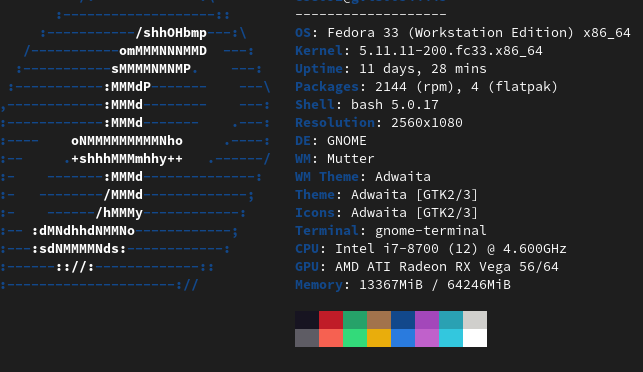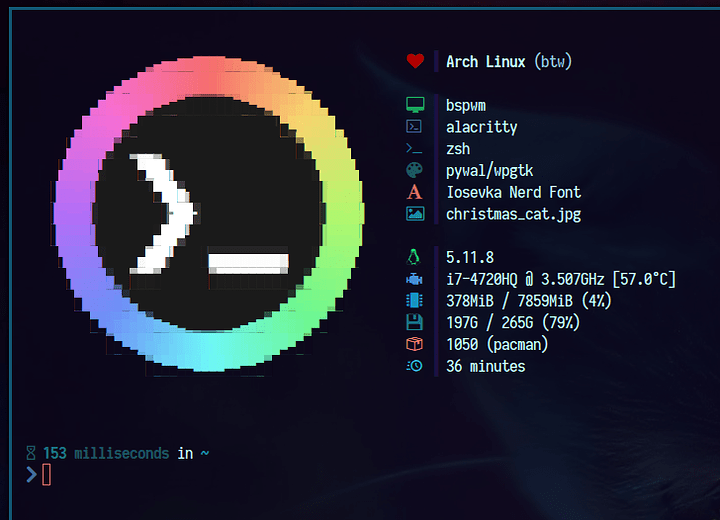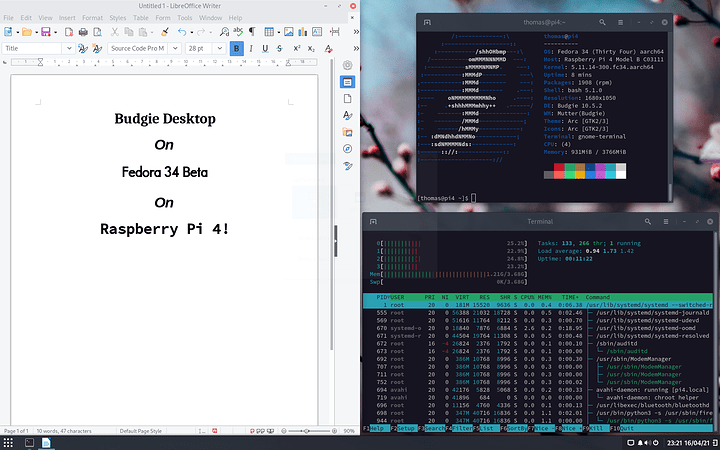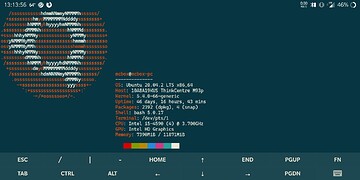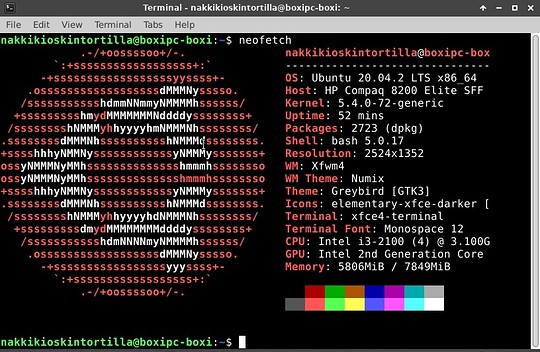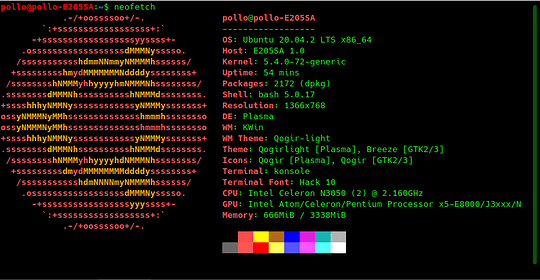disgusting /s
Not really a fan of Ubuntu (I have some beef with it) and especially not snaps, but hey, if it works, I’m glad for you.
You know if screenshot exif data has ip addresses in it this thread is a great way to start a bot farm lol.
If.
Go ahead, look at one.
Discourse scrubs exif data before saving.
Good.
Just for fun because of the version I am working with attempting to get proxmox to work. I will say it is working on a MSI B550 Mortar with a 2.5G nic with the drivers the package came with. I did have to install the Nvidia Drivers to make it so it wasnt choppy and shuddering using the CPU for rendering the GUI.
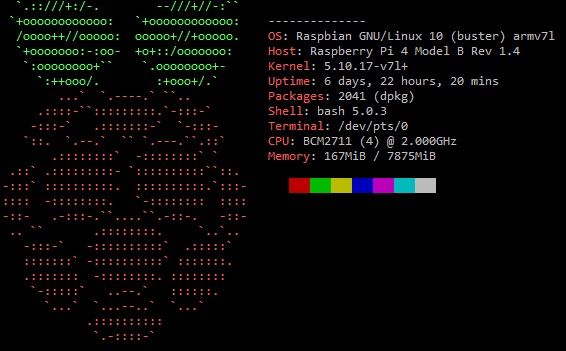
Didn’t feel like sacrificing my laptop to get “mo powa babeh” (and also to avoid using 10 times more electricity) so I got myself a Pi 4. Coming from a Pi 2 this thing is quick.
Got a Pi 2, 3 and 4. I must say that I don’t feel much of a difference (when running headless), unless I’m compiling stuff (which almost never happens). With a GUI, I do notice a huge difference between the 2 and the 4. The 3, I haven’t tried it. I’m running Void on all except one. I got 2x Pi 4s, one 8gb and one 2gb, the later one runs Ubuntu and is only a wireguard and default gateway for one device in its network. It’s probably overkill to use a Pi 4 only for that, but that was the only thing I could find and I was… uhm… “willing to not constantly play with” (which is why it still runs Ubuntu). I’m updating it once a month or more though.
Alpine Linux works wonders on all the Pis (it runs from RAM by default). I prefer Void myself (although it’s a little fatter, ie it doesn’t fit on a 2gb sd card like Alpine does), but I do try Alpine from time to time in VMs. The Void repo is just too good, I could find everything I needed in the main repo, unlike on Alpine and this is probably one of the very few reasons I prefer it.
Do you suggest it instead of the standard Pi OS? If it’s 64 bit and not beta it’s gonna be juicy! I’ve been using the lite one since the first day and, to be fair, I never had any issues with it (it’s Debian-based, nothing less to expect from it).
So far Docker has been running better for me and using Hadoop, Hive and Saprk for my university projects has been a lot more responsive. But I guess that’s an edge case and very few people have ever used it that way. Also the 8GB of RAM are soo nice to have.
P.S. if you have the cooling there and you didn’t do it yet there are 500MHz left on the table for the SoC on the Pi, I’d suggest you to take them haha
If you are a Linux nuthead (like myself), you like minimalism and you don’t care for either proprietary or even open-source special-sauce “developer’s repo” (eg: Ubiquiti’s repo for Unifi updates, MS’s repo for VS Code, GitLab’s repo for… GitLab etc.), then Void is a good choice.
Unfortunately for others, I’m not an evangelist, I’m only presenting alternatives (I always give Void and Alpine some advertisement, because I feel they deserve it), but I never tell people to switch. If Debian or other distro works for you, I’m still glad for you. I guess I’m not a good enough shill, but I’d rather have people actually interested in getting their hands a little more down and dirty to try it.
The Pi 4 version is aarch64 (and aarch64-musl, ie not using gcc libc), it is “stable” in the sense that it works just like all the other released versions on other Pis and other systems. Both Void and Alpine are very portable distros, they both run on ARM v6 to v8 and on POWER, Alpine also runs on IBM z9 mainframes and it has a rootfs for MIPS64 (I guess for containers). However, an official version is not available for the Pi 4, so you have to compile it using void-mklive on a Void system with qemu installed (I think you can do it on a live image). I’m following the development on github on Void’s Pi 4 support. I’m a noob when it comes to programming and git, but I’m helping to test the new images (I can share my images if you want, but I wouldn’t trust people on the internet to not give me malware, so I highly suggest you compile it yourself, I can help with that).
I have an Akasa Pi4-Pro heatsink case. I OC’ed it to 2GHz when I was using Ubuntu. I will try OC it again tomorrow when I flash a fresh new Void image on my SSD (yeah, probably the only reason why I could use the Pi 4 as my main PC for 2-3 months was the SSD). I love the fact that I can just extract the images, dd the fat32 one to a 2gb sd card, then throw the ext4 one on an ssd, edit the /boot/cmdline.txt and switch the root partition to whatever I want. Haven’t tried to boot from USB directly, but this way, my old sd cards are put to good use and not laying around.
Oh, just realized, tomorrow I should add the new Neoflexes with Void running on the Pi 4 and a recently acquired Pi 3 (I traded another Pi 4 2gb to a buddy for his Pi 3, because I wanted to help test Void on it and hopefully speed up development, I hope I can make a difference). I also have a new OpenBSD VM where I want to test OpenSMTPD, so I should add that too.
I very much do! And I also like that you’re not an evangelist that goes around shouting about their favourite distro. I don’t open my door for Jeovah’s witnesses, I won’t for linux evangelists too lol
That can be done I guess. I didn’t compile much stuff in my lifetime, but I can follow some instructions.
I forgot we talked about it, dammit. I’m sorry about that…
Does that really make a difference compared to a good SD card, like an A1 or A2 card which do have decent IOPS?
I find it really cool that you’re helping out the developement of Void and I’m sure testing helps out no matter what.
Lmao, I forgot too.
I’m not sure about that. Ubuntu ran on a Samsung Evo Plus 32gb Class 10 UHS-I SDHC. In day-to-day tasks like browsing on Firefox and editing a spreadsheet, it didn’t make any difference, however, I do feel a huge difference in boot times (well, Void uses Runit, so it has an advantage there in faster boot and shut down times, which I don’t care for anyway, because I rarely even reboot, had 14 days uptime yesterday on my main PC), but also in opening programs, especially opening Firefox, LibreOffice and ods spreadsheets, among other programs, basically everything except text files in Vim. The difference can be felt. I do believe an SSD on a Pi 4 can make a difference on Ubuntu and Raspbian too and if people want to use a Pi 4 as a desktop PC, an SSD will definitely make the experience better, no matter the OS. I’m using an Adata XPG sx8200 pro (Wendell reviewed it against the Samsung 970 Pro IIRC), but I’m limited on the USB 3.0 speeds (5Gbps), so a simple sata ssd would work just as well, but I already had the m.2 laying around and I liked the smaller form factor, so I bought an m.2 nvme to USB metal caddy (I think it’s a 3.2 gen 2, but I wanted to future proof it).
If you intend to only run containers on the Pi and you don’t intend to turn them on and off constantly, an SD card should be more enough and save quite a few bucks, maybe even enough for a second one lol.
I completly agree with everything you said. I thought about re-purposing an 840 EVO as a boot drive, but the SD is doing mighty fine and it’s keeping the LAN cabinet tidy. Maybe to test ESXi on it I might use it with an old and very used SD I still have around.
Just switched to Fedora. Mine’s kinda boring.

Got the latest version of budgie desktop running on the Fedora 34 Beta on my Pi 4 (Available on my copr repo)
thought this was funny…
11.11
11 days
